Osteochondrosis, as the most common spine disease, today occurs in people completely different ages, although not so long ago considered exclusively with the disease related to age.It is characterized by the occurrence of degenerative dystrophilic changes in interfaced discs, leading to pain and creates prerequisites for the formation of protrusions and intervertebral kilos.The disease may affect any part of the spine, although the osteochondrosis of the thoracic region is extremely rare.This causes significant difficulties with their diagnosis, because the symptoms of the disease mimic the pathology of the cardiovascular system.However, if a diagnosis is made, it is important to start treatment for thoracic osteochondrose immediately.Otherwise can cause extremely serious complications and performance loss.
Professional opinion of the doctor
"Because there are quite a lot of nerve endings in intervertebral discs, all changes in its structure lead to the transmission of appropriate signals in the brain, which results in the occurrence of pain in the affected area."
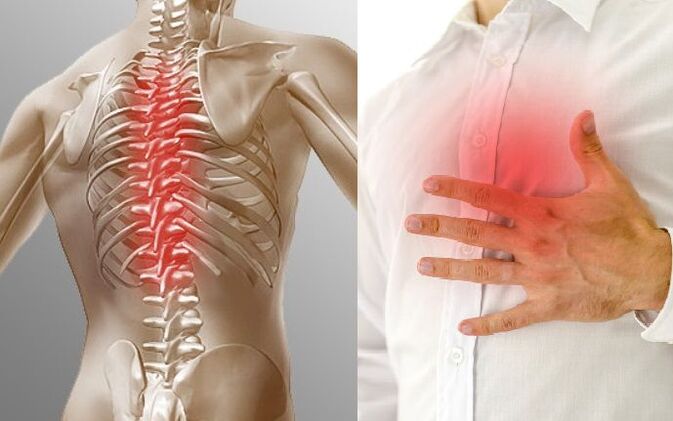
What is the thoracic osteochondrose and the characteristics of his treatment
Osteochondrosis of thoracic spine occurs in less than 10% of the total number of cases diagnosed with this disease.This is due to the low mobility of the thoracic spine.But this is the main gratitude of thoracic osteochondrosis, because its symptoms in many ways reminiscent of the signs of the cardiovascular system disease.Therefore, patients often turn to cardiologists or other experts and subject to treatment courses that do not bring results, but eventually seeing neurologists when the disease has already become advanced.
There are 12 vertebral in the thoracic spine.Between them, all are intervertebral discs, but more often the first and last segments of the prayer of this department is influenced by osteochondrosis.
In the future, the situation can complicate the compression of spinal roots, which go out in pairs at the level of each spine from the spinal cord and are responsible for regulating the functioning of the lungs, internal bodies of abdominal cavity and pelvis.As a result, there will be signs of disruption in their functioning, as well as the pain radiating ribs, which is called radio cylinder syndrome.
Generally, thoracic osteochondrose can be manifested:
- Shoulder pain, which are intensified by deep inspiration;
- pain behind the sternum in the heart;
- The occurrence of cough, shortness of breath due to the development of bronchitis, bronchial asthma, pneumonia and other lung diseases and bronchi;
- pain in the right hypochondria, resulting in liver disorder, gallbladder and its channels, which may be due to the development of cholecystitis, metabolic disorders, etc.;
- pain in left hypochondria or shingles due to pancreatic dysfunction, leading to increased risk of diabetes development;
- reduced immunity, the appearance of allergic reactions due to the control of the inervation of the adrenal gland;
- urinary disorders due to kidney failure and adding infectious diseases, especially chickenphritis;
- Disorders of female and male genital organs, including infertility.
In this case, strong pain causes reflective tension in rear muscles, which causes unpleasant sensations in them and increases the risk of pushing nerve structures.
The risk of changes in the functioning of internal organs increases abruptly in the later stages of thoracic osteochondrosis development, when interviolent discs occur already observed, ie.Formation from protrusion and interverebral hernia.In such situations, the pathological protrusion will be completely roots, which will cause disturbances in innervation of appropriate internal bodies and the development of their diseases.
So, although thoracic osteochondrose is a fairly rare disease, it can affect the functioning of the entire body.Therefore requires the current starting of comprehensive treatment.To do this, you must contact a neurologist who will assess the patient's condition, study the available test results and develop an individual treatment program.It will not extend not only about the degree of thoracic osteochondrosis (there are 4 phases, the easiest of which is 1.), but also about the nature of the disease manifestation, the type of concurrent diseases, age and a number of other factors.Therefore, with a right approach, patient treatment with approximately the same degenerative changes of discs can have significant differences.
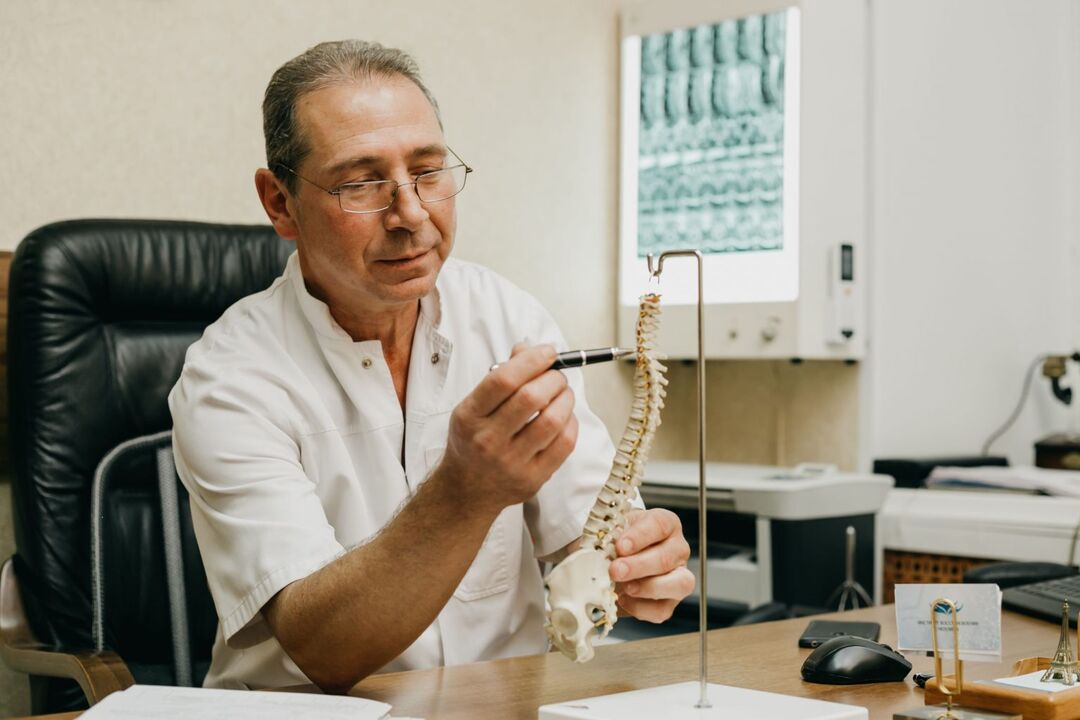
Treatment of thoracic osteochondrose is always complex.The target is to address the following problems:
- Elimination of unpleasant symptoms of disease, which improves patient quality and restores full functionality;
- Improve the quality of blood circulation in the affected area, which activates metabolic processes and will facilitate the process regeneration processes;
- Eliminating the causes of osteochondrosis;
- Reduction of the probability of disease complications.
Patients can be prescribed for this:
- The correction of lifestyle;
- Drug therapy;
- Exercise therapy;
- Hand therapy;
- Traction therapy;
- Physiotherapy treatment.
What specific methods will be recommended to the patient are determined by the present doctor, depending on the severity of degenerative dystrophic changes in the spine.So, if the thoracic osteochondrose is diagnosed in the first phase of development, which is, unfortunately, fairly rarely, it is usually enough to limit yourself to a particular adjustment of your lifestyle, exercise therapy and manual therapy.
But if the disease has already progressed to another, especially the third phase, additional drug therapy, traction therapy, etc.Will definitely be recommended.Moreover, if osteochondrosis has already caused the formation of intervective hernia, especially large, and is accompanied by heavy radio culinary syndrome, which cannot be eliminated by conservative methods, can only be achieved by improving the patient's condition only using surgery.
Thus, with thoracic osteochondrose, as well as similar lesions in other parts of the spine, treatment is aimed at stopping further advancement of degenerative changes in interfaced discs and improving patient's well-being.Existing, especially large lesions, it is still unable to achieve complete reconstruction of cartilage tissue, not only interveregni discs, but also other joints.So let's look at the main methods of treating thoracic osteochondrose and their characteristics.
Correction of lifestyle
After diagnosing thoracic osteochondrose, the doctor necessarily recommends that you give certain changes in your usual lifestyle.If the patient shows signs of excess weight, it is advised to take measures to reduce it.But each weight loss diet, especially monocomponent, are contraindicated.Nutrition must be complete and diverse, so that the body receives all the substances necessary for proper functioning, and metabolic processes in the interfaced discs continue correctly.Therefore, it should be that fully possible with the principles of rational diet.
It is also recommended that all patients increase the level of physical activity, especially those who lead the sedentary lifestyle.This could be everyday walking, swimming, yoga or pilates.But serious physical activity, especially intense training on simulators, jumping sports and weight lifting are contraindicated.

If the patient's profession involves serious physical work, such as heavy lifting, it is recommended to try to change.This is due to the fact that increased load loads in the presence of osteochondrose can play the role of trigger for rapid advancement of degenerative changes in discs.
Absolutely all patients with thoracic osteochondrosis are recommended to change the mattress in orthopedic with medium hardness, as well as the purchase of an orthopedic pillow.This will ensure that the physiological curves of the spine are maintained and will prevent further disc degeneration.
Treatment of drugs thoracic osteochondrose
When treating osteochondrose, patients usually prescribe the drug complex.Some of them are recommended to be taken only occasionally, especially during the disease deterioration, while others should be used in the courses, which is required by a doctor.
When you prescribe certain medications, the neurologist must find out whether the patient has simultaneous diseases and their nature.This is necessary to exclude contraindications to download certain medications.
Generally, for thoracic osteochondrose, the following drug groups can be prescribed:
- Nsaids;
- corticosteroids;
- muscular relaxants;
- Vitamins;
- Chondroprotectors;
- Local use products;
- mean to improve microcirculation.
Nsaids
Nesterous anti-inflammatory drugs are one of the most comprehensive groups of drugs, because they have a huge list of indications for use, which includes thoracic osteochondrose.They have anti-inflammatory and analgesic properties, so they are indicated for the deterioration of the disease and the appearance of pain.
Today, there are 4 generations of NSAIDs, including the latest, four-sided medications are considered the safest and most efficient.They are characterized by their selective actions and practically do not have a negative impact on the mucous membrane of the stomach and duodenum.At the same time, earlier medications in this group should not be used, especially for a long time in the presence of gastritis and peptic stomach ulcers and twelve, because they can cause their deterioration.
NSAIDs are available in almost all possible dosing patterns, which allows you to select the medicine according to the use mode.Therefore, in the early stages of thoracic osteochondron, the use of fat, gels or creams is indicated.For heavier pain, the inclination is given to capsules or tablets, and if there is no effect, intramuscular drug injections are allowed.
Corticosteroids
Medicines in this group belong to the hormone group and contain synthetic analogs of adrenal hormones.Therefore, they have a strong anti-inflammatory effect and are indicated for heavy inflammatory processes.But due to the possibility causing numerous negative side effects, they are usually prescribed in the form of injection solutions and only in short courses.
In addition, corticosteroids in combination with local anesthetics are used to perform paraiverbral blocks.They are indicated for a very strong pain that discloses the person of his ability to work, but it can be performed only in the medical institution.The blockade helps quickly mitigating even very strong pain and consist of introducing a prepared solution in points in the immediate vicinity of the spine, in the area where the spinal roots cross.
It is recommended to perform such procedures no more than 4 times a year.
Muscular relaxants
Muscular relaxants are a group of medications designed to mitigate muscle cramps.Let's remember that they often act as a reflex response body to pain.Therefore, the use of muscle relaxants will help reduce the severity of pain in thoracic osteochondrosis.
Vitamins
When treating thoracic osteochondrosis, vitamin complexes that contain increased amounts of vitamin B can be further prescribed.This is necessary to improve the quality of passage of bioelectric pulses along the nerves, which is especially important in the case of radical syndrome.In this way, the development of disorders in the functioning of bodies that imposed the spinal roots of intervertebral disks that are in the lesion level.
Chondroprotectors
Chondroproteons are a relatively new group of drugs that are actively prescribed for thoracic osteochondrose.As active ingredients, they generally contain compounds that are absolutely natural for the human body and use it to regenerate intervelled disks and other cartilage.
But at the same time, there is still no convincing evidence of drug efficiency in this group in advanced forms of osteochondrose, although in the initial phases they work pretty well.At the same time, the natural origin of the hondroproteker ensures a high level of security.
These drugs are available in different forms, including capsules, thematic preparations, powders and injection solutions.The best results are observed with the management of injection hydroprotents.But despite all the positive aspects of drugs in this group, they are characterized by high costs, which are combined with the need to use them in 30-day courses or more, makes their use not available to everyone.
Topicl products
In addition to fat, creams and gels that contain NSAIDs and hondroprotectors above, the treatment of thoracic osteochondrosis may include use of heating and local irritating agents.Their principle of action is based on the irritation of the skin receptor at the application site.This leads to the active blood flow to the area of application, and thus the influx of nutrients.As a result, the quality of the diet of intervertebral discs improves, and the pain decreases.
Products for microcirculation improvement
Medications in this group are also used to improve the quality of blood circulation and activate metabolic processes.
Practice therapy
Therapeutic physical education plays one of the leading roles in the treatment of thoracic osteochondrose, because it allows:
- strengthen the muscle corset, which will ensure the creation of high quality spine support;
- normalize muscle tone;
- Activate blood circulation, which will improve the flow of metabolic processes on affected intervelebral discs.
But patients should understand that the use of general exercises can negatively affect the course of diseases and well-being, because of the individual characteristics, the degree of osteochondrosis and existing simultaneous diseases.Therefore, for efficient treatment of thoracic osteohondrone, it is necessary to develop a program of exercise therapy on an individual basis.
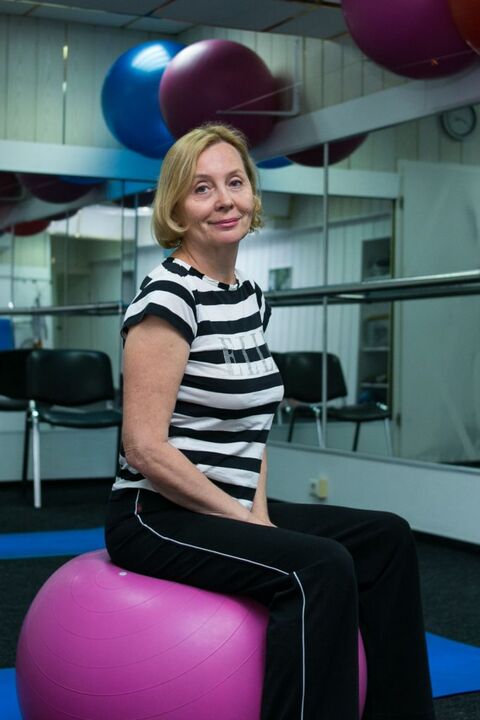
Initially, so that the patient can overcome the correct exercise technique, it is recommended to exercise under the supervision of exercise instructor.It will be able to properly calculate the burden in accordance with the level of physical development of the person and adjust their movements to make exercises derived to make maximum benefit.The program will gradually become more complicated, and after it completely overcome, the patient can practice at home.But for teaching to give good results, they should be implemented every day.
When performing all therapeutic exercises, it is important to avoid sudden movements.
Hand therapy for thoracic osteochondrosis
One of the most effective ways to treat thoracic osteochondrose is hand therapy, because it doesn't just allow you to do the muscles well, but also includes an impact on your spine.This is how it differs from the therapeutic massage, which is also very useful for osteochondrose, but is unable to have the same effect as hand therapy, because it does not include a spine.
But for manual therapy to bring only benefits, you need to be careful when choosing an expert to bring it out, because the effect on your spine must be performed with precision.Otherwise, there is a great risk of complications.
Manual session therapies are starting with a blow and relaxing muscles.The doctor works well in every area of the rear, eliminating cramps and prepares soft tissue for the active action.After that, he begins to use the techniques of mobilization and manipulation, which can sometimes be accompanied by small discomfort and crushing.
Manual therapy mode, which is characterized by the use of special techniques that have proven to be 20 years as one of the most renegade, deserves special attention.They do not only allow a beneficial effect on affected intervebrebral discs, but also to improve the quality of the functioning of all internal organs, because, as already mentioned, they have a close relationship with vertebra.
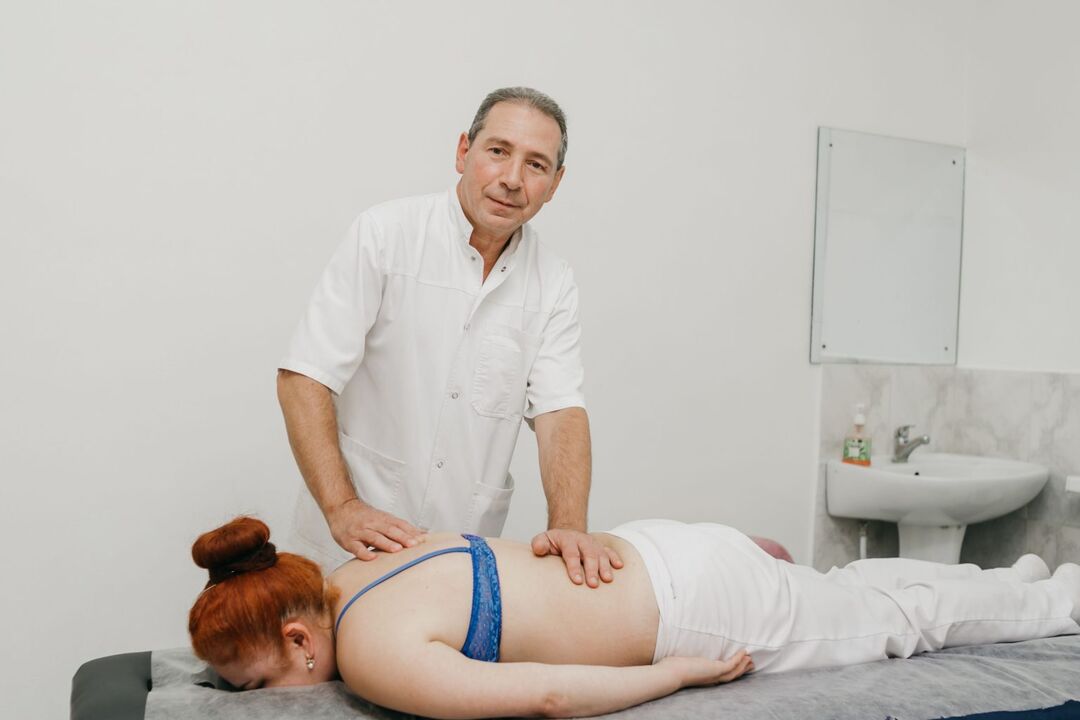
Generally, the subject of the hand therapy session provides:
- Restoration of the correct spine anatomy with the return of vertebrae to their assigned places;
- Increasing the distance between the vertebral body, which has a beneficial effect on the state of interfoodbral discs by reducing pressure on them;
- normalization of muscle tone;
- Elimination of functional blocks;
- Improving the functioning of lungs, bronchies, hearts and gastrointestinal tracts;
- Increasing immunity and reducing exposure to allergens.
At the same time, after the first session, improving a good beings is improving.After that, patients recorded a progressive reduction in pain and improvement of the general condition, increased performance and mood.
Physiotherapy
Physiotherapy methods are widely used to treat thoracic osteochondrose after the end of the acute phase of the inflammatory process.They can further reduce the severity of discomfort on the back and also have a number of other positive effects on the body.
It is most often for thoracic osteochondrose, they are prescribed:
- Electrophoresis with the introduction of medicines - This method allows a deeper penetration of the component of the tissues and improves their therapeutic effect using a weak electric current;
- Magnetotherapy is a method of physiotherapy treatment based on the useful effects of the magnetic field on the body, which helps encourage blood circulation in the field of influence, leading to activation of metabolic processes, reduction in pain and swelling;
- Laser therapy is a method that allows you to achieve the pronounced effect of anti-inflammatory and vasodilator that will lead to improvement in the state of intervertebral discs and pain reduction;
- Ultrasonic therapy is a physiotherapy procedure that provides anti-inflammatory and analgesic effect;
- Diaglinamic currents are an effective method of physical influence, thanks to the use of which the severity of pain, increasing the metabolic rate and improvement in the state of muscle tissue.
As a rule, physiotherapy proceedings are prescribed in the courses of 10-15 sessions.But each of them has its contraindications, which must be taken into account when choosing a certain type of exposure.
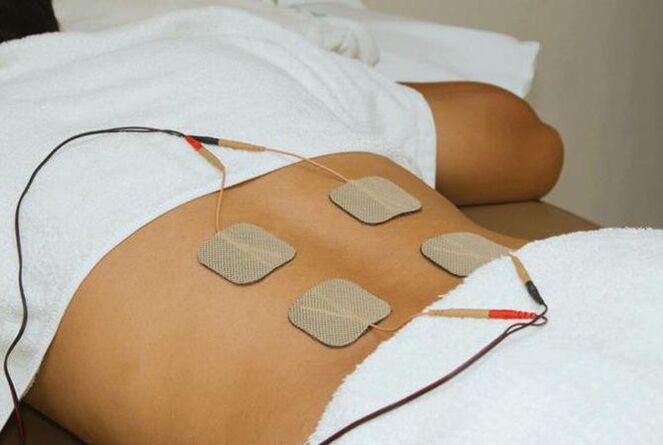
Traction therapy
Theraction therapy allows you to increase the distance between the vertebral spine, which will reduce pressure on the interfaced discs affected by osteochondrose.This will stop the response of the disease and create optimal conditions for rebuilding cartilage tissue.Traction therapy or spine is performed on a separate table under the supervision of medical experts.
Thus, although thoracic osteochondrose is not a common disease, it can significantly reduce the quality of life life and lead to the development of a series of domestic organs pathology.At the same time, the difficulties of diagnosis act against the patient, because without proper treatment, degenerative changes in the interfaced remains are still worsening.As a result, complications are often developed in such situations, including the formation of protrusions and intervective hernia.It is therefore important that it does not neglect changes in welfare and immediately consult a doctor, and when diagnosing thoracic osteochondrose, you strictly follow the recommendations received from it.



















